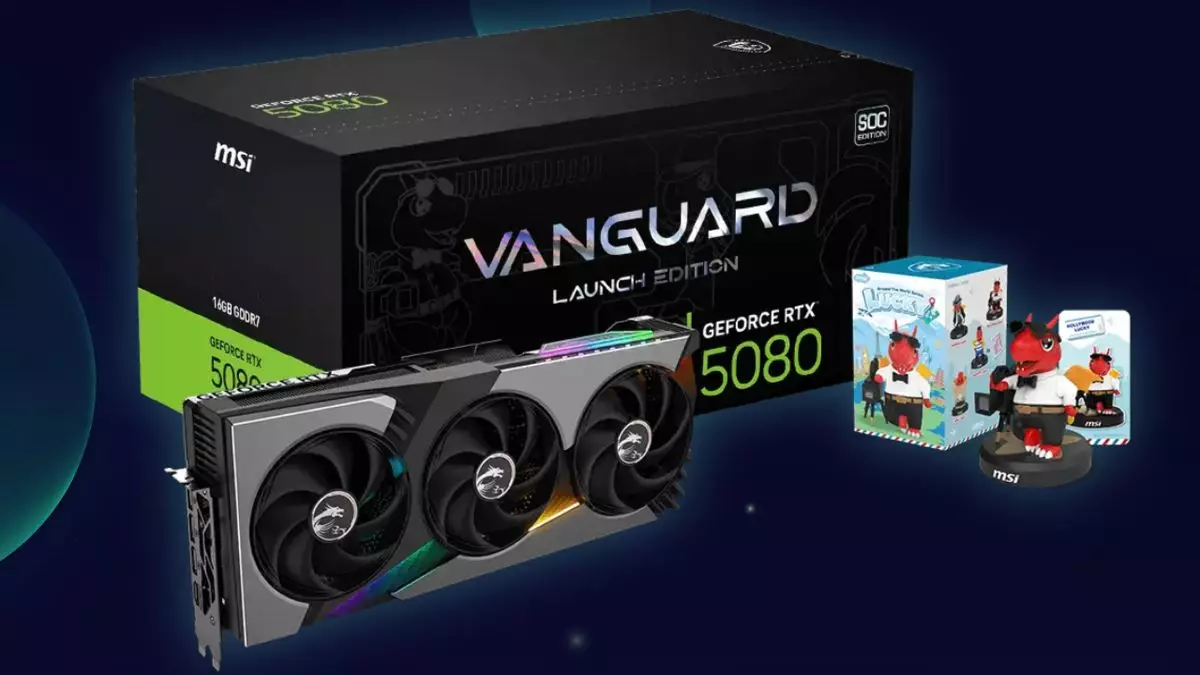From the days of my childhood, the act of collecting often felt like a blend of hope and nostalgia. I vividly recall my father’s obsession with assembling a collection of Natwest pigs, all with an anticipatory eye on their future cash potential. Fast forward to today, and we find similar echoes in the tech world, where minor collectibles have unexpectedly crept into the realm of digital currency. The news from Taiwan about MSI’s promotional Lucky Dragon figurines illustrates this transition beautifully. Catering to a passionate gaming audience, MSI has ingeniously wrapped utility within the allure of collectible figurines that may very well impact the gaming community’s landscape.
MSI’s Ingenious Marketing Strategy
MSI’s promotion inviting Taiwanese residents to collect nine Lucky Dragon figures for a shot at acquiring an RTX 5080 is a brilliant marketing ploy. In a market where GPU shortages and price markups create an atmosphere of desperation, such initiatives not only engage consumers but also create a community-driven quest. While initially enticing customers, this strategy showcases the power of creating exclusive experiences around product ownership. Collectibles are no longer just fun trinkets; they represent a tangible, emotional investment, linking consumers with brands on a deeper level.
Yet, here lies a paradox—acquiring these figurines isn’t as simple as one might hope. The promotional figurines are bundled with a limited release of MSI’s RTX 50-series GPUs. In essence, one must dive into the complexities of the overpriced GPU market – a territory fraught with turbulence. Hence, while the figurines may seem innocuous and whimsical, they’re an entry point to a challenging narrative that involves overcoming economic barriers just to join the collecting game.
The Emergence of a Secondary Market
Flipping over to the second-hand market dynamics, the journey of the Lucky Dragon figures is where things truly get interesting. Reports of these figurines fetching around NT$4,000—about $121—point to a burgeoning micro-economy fueled by gaming enthusiasts’ aspirations for an RTX 5080. This secondary market not only reveals the lengths to which gamers will go to enhance their setups but also highlights an inclination toward creating value from seemingly mundane items.
Collectors are often driven by nostalgia, and the rise in interest for these figures reflects this phenomenon. What may appear as just another collectible could evolve into a valuable asset. An emblem of gaming culture, the dragon figurines might serve as both a decorative piece and a symbol of achievement within a competitive arena where every advantage counts. As such, the intersection of collectibility and technology emerges—a compelling narrative for today’s digital consumer.
A Reflection on Value Beyond Coins
For many, collecting extends beyond monetary value; it’s a passionate pursuit entwined with personal stories and emotional significance. As someone who has explored various collectibles through the years—from action figures to limited-edition merchandise—the sentiment resonates deeply. The figure I grudgingly stumbled upon from my own modest collection might have little market value but holds a significant space in my heart. This juxtaposition of perceived worth versus emotional attachment forms the backbone of why the gaming community zealously embraces such promotions.
The intricacies of this promotion add an element of fun and community, but it doesn’t come without its caveats. In a world where not everyone can afford expensive GPUs, the allure of a fantastical figure may be steeped in irony. Here we are, dabbling in a virtual treasure hunt whilst grappling with the harsh realities of contemporary gaming economics. Whether this is an innovative breakthrough or a mere marketing gimmick remains for the community to decipher.
Looking Ahead: Future of Collectibles in Gaming
The fusion of collectibles and technology in gaming is undoubtedly a trend on the rise. As technology evolves, so too will the methods that companies utilize to engage their audiences. The recent MSI promotion exemplifies how the gaming industry’s marketing strategies can tap into nostalgic value, creating unique incentives for consumers.
While the worth of these figurines might fluctuate, their ability to spark joy and camaraderie among gamers affirms their place in the culture. As we continue to navigate through advancements in this digital age, one thing is clear: these playful yet probing marketing strategies will keep gamers on their toes, constantly balancing the lines between value, nostalgia, and the ever-present escapism found within the gaming experience.

